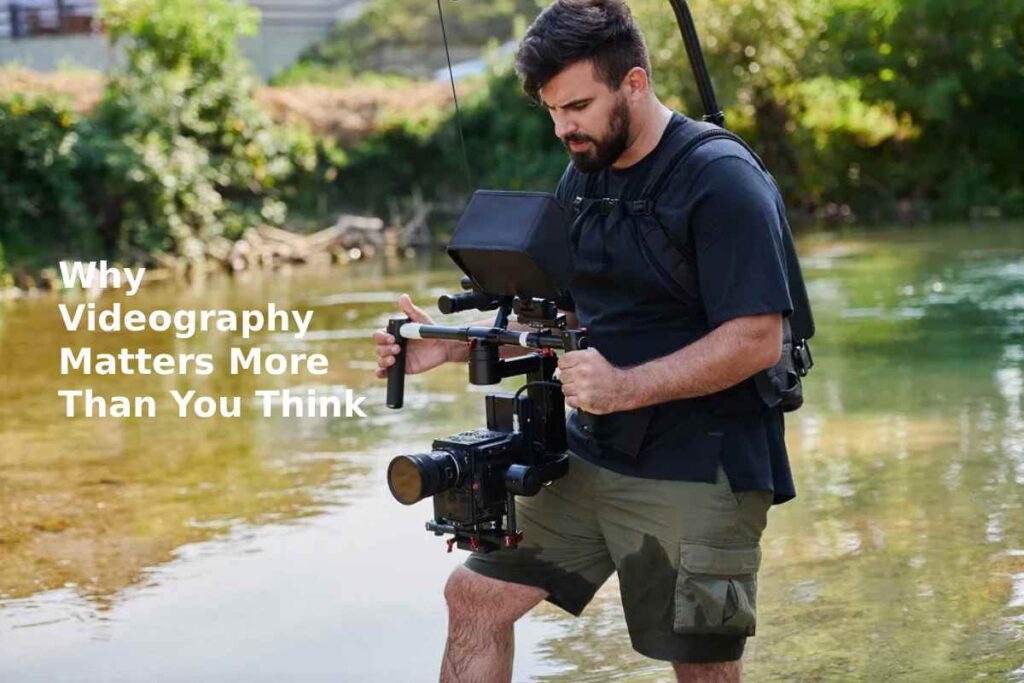When people hear the word “videography,” the first thought is often movies, YouTube channels, or maybe wedding videos. While those are important, videography has grown into something much larger. It is no longer just about entertainment or personal memories. Today, it plays a powerful role in how businesses communicate, grow, and connect with people.
Beyond Just Pressing Record
There’s a common idea that making a video is as simple as pulling out a phone and hitting record. While that can capture a moment, videography is much more. It involves planning, creativity, and technical skill. Businesses use it to shape the way they present themselves to the world.
Think about a brand introducing a new product. A short, well-made video can show not only what the product looks like but also how it works and why it matters. In many cases, audiences remember visuals and stories far more than plain text. That is why professional videography is often suggested for companies looking to build stronger connections with their customers.
The Power of Visual Storytelling
Every business has a story. It could be the story of how the company started, how a product is made, or how customers use a service. Videography makes these stories clear and engaging. A written post might share details, but a video adds movement, sound, and emotion. That combination has a stronger chance of catching attention.
Consider advertising campaigns. A clever slogan can be remembered, but when paired with powerful visuals, the impact multiplies. A business explaining its values through a short film or showing customer experiences through video testimonials can often make a stronger impression than a page of text ever could.
Building Trust with Audiences
Trust is one of the most valuable things a business can earn. Without it, even the best product struggles to succeed. Videography helps build trust because it feels real and authentic. Seeing people talk, watching a team at work, or viewing a behind-the-scenes look at how a product is made allows customers to connect on a deeper level.
When people see faces, hear voices, and watch real interactions, the business stops being just a name. It becomes something they can relate to and understand. This is one reason many companies now prefer to use video for training, customer introductions, and even recruiting new employees.
Standing Out in a Crowded Market
There are countless businesses competing for attention, both online and offline. Written posts, photos, and ads can easily get lost in the mix. Videography offers something that breaks through the noise. Motion catches the eye faster than static content.
For example, when scrolling through social media, most people pause on videos before stopping at text or still images. Businesses that invest in video often see higher engagement, more shares, and greater overall reach. This isn’t just a trend. It’s a clear shift in how people prefer to receive information.
Training and Education Made Easier
Businesses don’t only use videography for marketing. Many also rely on it for training employees. Written manuals are useful but can be overwhelming. A step-by-step video, however, makes complex tasks easier to understand.
Imagine a company introducing new technology in the workplace. Instead of handing out thick instruction guides, a short video demonstration shows exactly what needs to be done. This saves time, reduces mistakes, and helps everyone feel more confident.
The same approach can be used for customer education. Companies offering software or new tools often release tutorial videos so customers can quickly learn how to use them. This reduces frustration and improves satisfaction.
Cost-Effective in the Long Run
Some businesses hesitate to invest in videography because they worry about costs. It can seem expensive at first. However, the value often outweighs the initial price. A single high-quality video can be used in many ways: websites, social media, email campaigns, and presentations.
Unlike a single-use ad or print material, video content continues to work long after it’s created. A company video uploaded to its website or YouTube channel may attract new viewers for years. The long-term benefits make it a smart investment for many organizations.
Helping Businesses Stay Modern
The world of business changes quickly, especially with technology. Customers expect modern, polished content. Videography signals professionalism and shows that a company takes communication seriously.
Think about two businesses: one with only basic text on its website, and another with a short video introducing its team and services. Most people will feel more confident choosing the second one. This doesn’t happen because the second business is automatically better, but because video creates a stronger connection and leaves a lasting impression.
Encouraging Engagement and Action
It’s not just about people watching a video—it’s about what happens next. Videos encourage engagement. They can inspire viewers to comment, share, or take action, such as signing up for a service or purchasing a product.
For businesses, this interaction is critical. Every comment or share extends reach, builds community, and drives attention back to the company. The right video can spark a conversation that continues long after the first view.
A Tool for Every Industry
Videography isn’t limited to one type of business. Restaurants use it to show meals being prepared. Tech companies use it to explain new devices. Fitness trainers post workout videos. Even schools and nonprofits rely on videography to share updates and highlight their work.
No matter the field, video helps explain, inspire, and connect. Its flexibility is what makes it such a valuable tool.
Final Thoughts
Videography is more than a creative option—it’s becoming a necessity for businesses that want to succeed. It builds trust, captures attention, simplifies communication, and keeps companies competitive in a fast-moving world. While words and images still matter, video brings everything together in a way that people naturally respond to.
For businesses looking ahead, the question is no longer whether to use videography, but how to use it most effectively.

